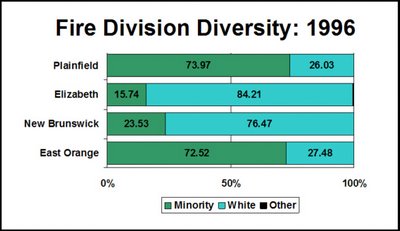I was incredulous the first time, and after that settled into being simply mystified.
Mystified about why once a year, like clockwork, I would be asked to work on a diversity recruitment campaign for Plainfield's Fire Division that included ads, press releases and flyers. The annual campaign was part of adhering to a consent decree, I was told.
I worked closely with Plainfield's Fire Division over the years on public relations efforts ranging from fire safety education to capital equipment purchases, from shabby firefighter quarters to the Division's treasure-trove of memorabilia.
In my experience, Plainfield's Fire Division is a model of diversity, so why was Plainfield subject to a consent decree?
Light was shed on that question by the Ledger with Monday's story ("N.J. fire squads still not diverse") on the consent decree and its history. And today, the Ledger editorialized on the subject ("Diversity program has yet to catch fire").
It must be noted that the 'diversity' sought by the decree only refers to Blacks and Hispanics -- women and other minority groups were not on anyone's radar in 1977, the year the original suit was filed or in 1980, the year the consent decree was issued.
But my question remains. Consider the following charts for Plainfield and some of the other parties to the decree, comparing the years 1996 and 2005:
Someone has to explain to me why Plainfield STILL needs to be included in the consent decree, though it is perfectly clear why others should be.
Wouldn't the city be better off making an effort to remove this blot from its reputation?
-- Dan Damon
Not getting your own CLIPPINGS email daily? Click here to get started.
*


No comments:
Post a Comment